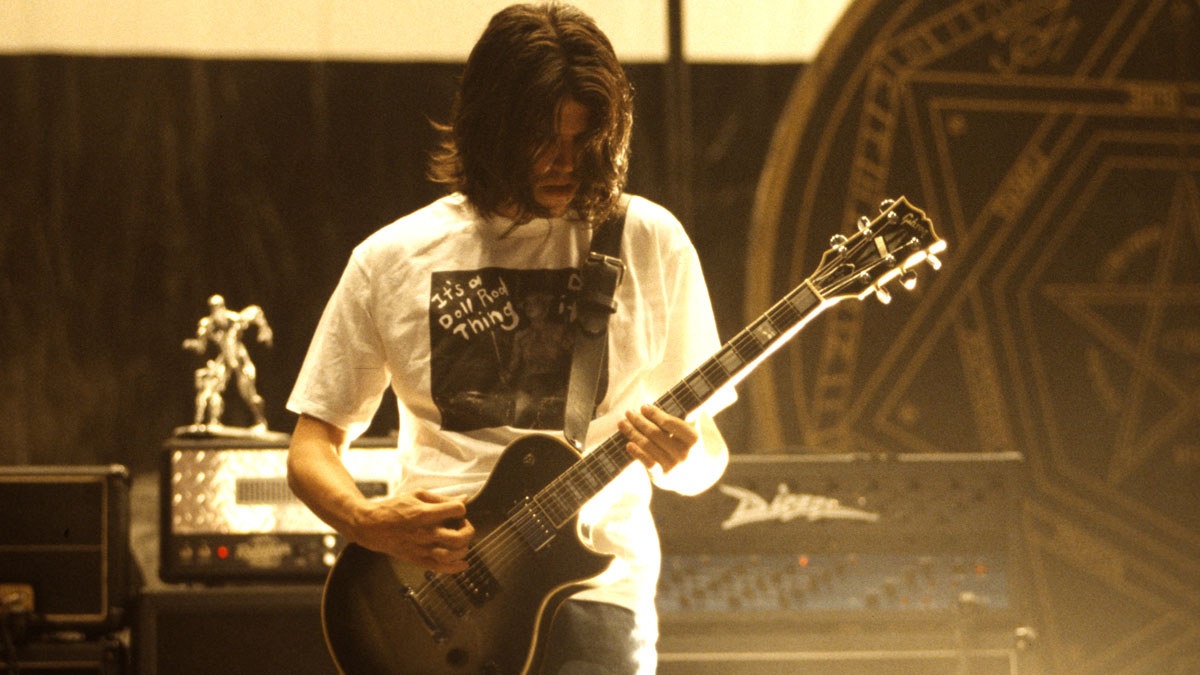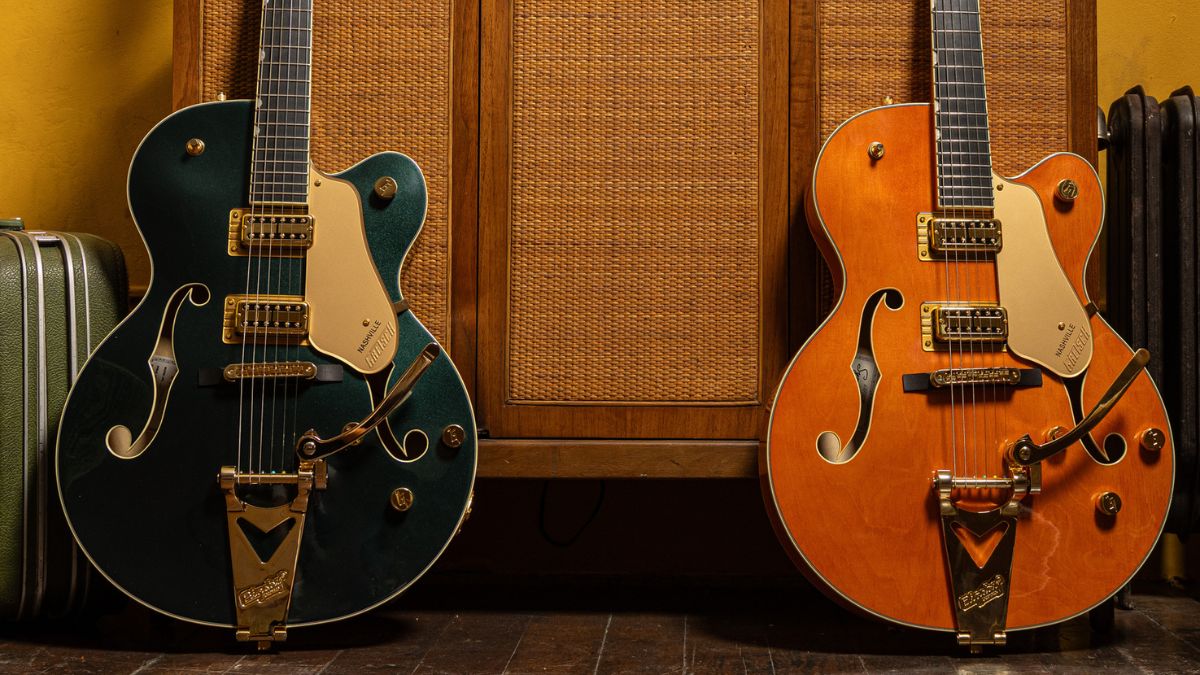The secrets behind Adam Jones' tone on Tool's Fear Innoculum: producer Joe Barresi reveals all
Everything you need to know about the guitar gear and recording rig behind the long-awaited album

As well as our exhaustive interview with Adam Jones, where he talks talks everything Fear Inoculum, we caught up with Tool producer Joe Barresi, who let us in on Jones' tools of the trade for the chart-topping new record.
In the following chat, Barresi details Jones' desire to mix up his electric guitars, syncing delay times, and why four heads are better than one.
What was the starting point for Adam’s guitar tones on the new album?
"His sound is definitely his Les Paul Custom into his main Diezel VH4 and that Marshall Superbass, but like the last record, I also implemented a Bogner Uberschall and a Rivera Knucklehead Reverb or a Knucklehead K Tre as part of the equation.
Adam was really into experimenting with other stuff - guitars included - this time around
"I recorded both of Adam’s personal amps to their own track and combined the Bogner and Rivera to a single track, plus we ran a mic’d Leslie cab in stereo the whole time, which gave us a total of five tracks wide of just guitar.
"That was the main dirty sound, but the clean sound varied a lot. Besides cleaning up and dropping the gain on the amps we used for distortion sounds, I used an old Orange, an old Peavey, a new Fryette-made Sound City halfstack, an old Kustom and a Naylor. Adam was really into experimenting with other stuff - guitars included - this time around."
What cabs did you use?
All the latest guitar news, interviews, lessons, reviews, deals and more, direct to your inbox!
"The body of it was Mesa/Boogie 4x12s loaded with 8-ohm Celestion V-30s. The Riveras went into a Rivera 4x12 loaded with 75-watt Celestions, which is my favorite speaker because they have a tight bottom end.
"The Uberschall was in a Mesa cab and the Marshall was in Adam’s own Marshall cab that had either Celestion V-30s or Greenbacks. The Sound City stuff went through 50-Watt Fanes that were in a new Sound City 4x12."
The four amps besides the Marshall that were used for the dirty sounds have a lot of sonic overlap. Could you explain what each one brought to that core sound?
"For this record, we ran the Diezel on channel 3 with a good rock sound, pretty saturated. It’s actually a modified Diezel that’s had a preamp mod done to it - so it’s the best-sounding Diezel in his arsenal of VH4s. The mod gives it a different responsiveness somehow; it just feels a bit punchier.
"It’s also highly volatile because of that, but amps seem to sound better when they’re about to explode! It has a thing and it definitely complements how Adam plays.
"The Marshall fills in the clarity and articulation that’s missing from the Diezel when in high-gain mode. I brought in the Uberschall for some overall beef and the Riveras for some extra muscle as their EQs are so flexible, and they work nicely for both dirty and clean sounds.
Since the signal was split to at least four heads, I put a pedal in front of everything and it helped shape the front-end of all the amps a bit
"Since the signal was split to at least four heads, I put a pedal in front of everything and it helped shape the front-end of all the amps a bit. I used an MXR Micro Amp +, which gave us a little more EQ flexibility, so I could crack in some top or take out some bottom if needed.
"We also ended up using a SoloDallas wireless preamp unit to drive the front of some amps and give a little extra push on some songs.
"It was nice to have the time to experiment, and those guys are all about whatever it takes and really encouraging of it. We ended up using a '60s Gretsch Jet Firebird for some clean stuff, which has that semi-hollow tone and rings differently. Adam brought in a Gibson Marauder - which I thought was the ugliest guitar I’d ever seen - but it has the pickups Bill Lawrence designed for Gibson, and it blew my mind how much clarity those pickups had; with that five-way varitone switch, you can dial in almost any sound."
The record has a lot of heavily effected guitar sounds that make for some major impact points. How did the two of you go about crafting those tones?

"Adam’s main delay is a Boss DD-3 and as we didn’t track to a click, we spent a lot of time getting the delay in time with Danny’s drums while we overdubbed. Sometimes we would run two or three Boss DD-3 Digital Delays in a row and turn them on or off for different sections.
"Once the delay was perfectly in time, it really made sense to me because it opened up this space between the beats that allowed Danny and Justin be clearly heard. There was a lot of experimentation involved with reverbs and room sounds, too. We did all kinds of weird shit with interactive effects like Caroline’s Kilobyte and Meteore, which you can step on and latch to do regeneration feedback.
"But for the most part Adam really liked to get feedback by playing in front of his amps and we spent quite a bit of time doing that, it’s such a big part of his sound. A lot of the really weird effects stuff was done in mixing."

